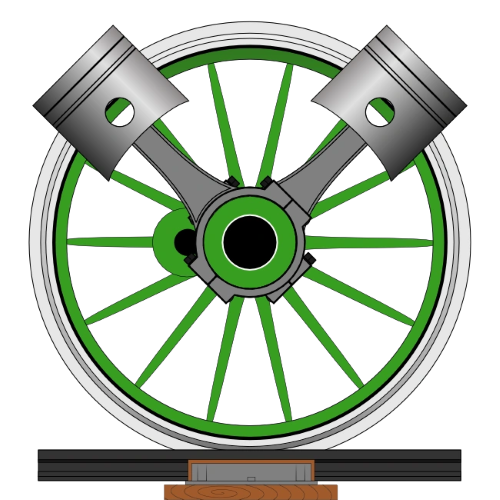The CIÉ 113 class were the first mainline diesel locomotives built for Ireland, built by the Inchicore Works of the former Great Southern & Western Railway (GS&WR) in Dublin. Construction for this class began in 1948, though a shortage of parts meant that prototype #113 was completed in 1950, and #114 the following year. Like theother Sulzer engined locomotives owned by the CIÉ, these machines had a short career compared to their successors. Weighing 81 tons, their axle load was considered too high as a result of their Bo-Bo configuration, compared to the six-axle layout of all other Sulzer-engined locomotives on the CIÉ fleet. Another detrimental factor lay in their poor braking ability, which resulted in quite a few runaway incidents in revenue service.
Technical Information[]
The 113 class locomotives were originally fitted with Sulzer 6LDA28 engines, producing 915 HP, later being uprated to 960 HP in 1956, while still putting down 721 HP to the rails. The transmission was provided by a "Metrovick" generator and Metrovick MV137CW traction motors identical to those used in the 001(A) Class, 101(B) Class, and 201(C) Classes, propelling the 113's to a top speed of 55 MPH. Throughout their operating careers, however, they suffered from chronic brake leaks, necessitating the installation of chokes on the brake cylinders after #114 became involved in a serious runaway incident in August 1971.
Preservation[]
While #114 would quietly be scrapped in March 1995, #113 was chosen for preservation, returning to Inchicore Works for a cosmetic restoration. As pictured above, the locomotive has some fittings missing, and the floorboards are all rotten, but is otherwise intact; being left in a siding in an attempt to block the sound emminating from the Inchicore Works. The locomotive has also since been repainted into original CIÉ green as it once wore between the mid 1950's and about 1963, before being subsequently swapped for a new livery of primarily black. #113 is currently on static display in the Ulster Folk and Transport Museum in Cultra.
